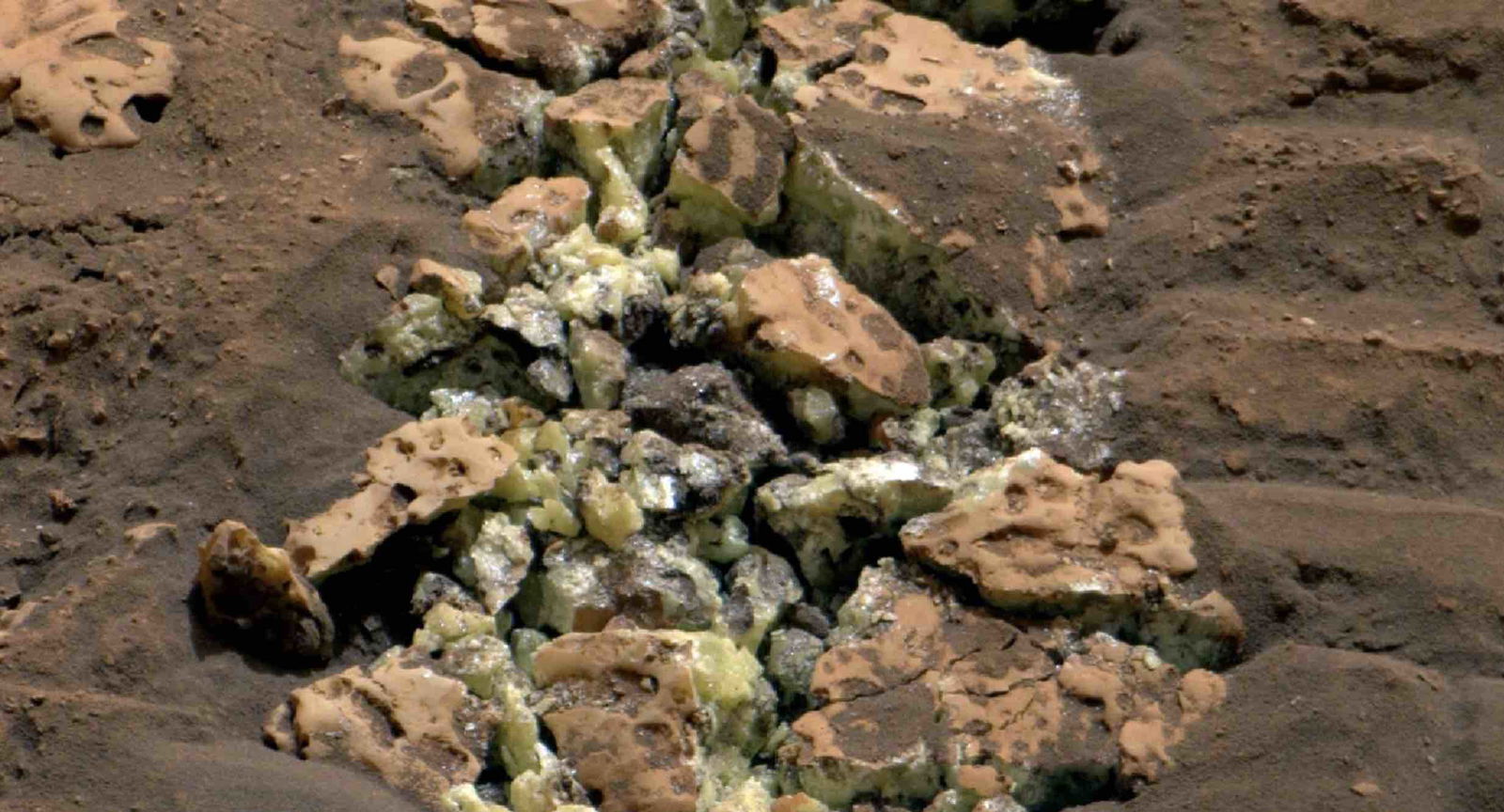NASA’s Curiosity rover has made an uncharacteristically colorful discovery on the Red Planet. It revealed a small pocket of yellow crystals hidden within a stone on the Martian surface.
The colorful stones, composed of sulfur, were found on May 30 during the rover’s exploration of a sulfate-rich region of the Martian surface. However, the discovery of the bright yellow crystalline mineral was an unexpected find for the Curiosity team, marking a colorful first that, to date, has never been previously encountered on the Red Planet.
The discovery raises several intriguing questions about Mars and its history, as well as what environmental factors could have led to the formation of the crystals.
A Chance Discovery
Since October 2023, Curiosity has been scouring the Gediz Vallis channel on Mount Sharp, an area where scientists believe ancient lava flows occurred in the planet’s early history. The Martian rover has concentrated its explorations in the area, given the region’s promising potential for having once been home to microbial life or even the possibility that it may still be a present-day refuge for such simple organisms.


The discovery of the colorful mineral was made by chance, as Curiosity cracked open a rock while driving over it. To the Curiosity team’s surprise, the yellow interior of the stone revealed what is likely to be pure sulfur, whereas the sulfates that are normally encountered in the area are salts comprised of combinations of sulfur and other minerals.
Unveiling Mount Sharp’s Mysteries
Since 2014, NASA’s Curiosity rover has made its ascent of Mount Sharp, where its explorations of the Gediz Vallis channel have revealed a portion of the landscape once shaped by ancient water flows on the planet. Curiosity’s present mission is to investigate whether this ancient channel and its surrounding terrain could have supported microbial life, particularly at a time when water was more abundant on Mars.
“This was not a quiet period on Mars,” according to Becky Williams, a scientist at the Planetary Science Institute and deputy principal investigator of Curiosity’s Mast Camera. “There was an exciting amount of activity here.
“We’re looking at multiple flows down the channel, including energetic floods and boulder-rich flows,” Williams said.
Going forward, the Curiosity team hopes to conduct drilling on larger rocks in the area to determine if they may also contain sulfur crystals. Presently, the relationship between elemental sulfur and other sulfur-based minerals in the area remains unclear to scientists studying the Martian environment.
“Finding a field of stones made of pure sulfur is like finding an oasis in the desert,” said Ashwin Vasavada, Curiosity’s project scientist at NASA’s Jet Propulsion Laboratory.
“It shouldn’t be there, so now we have to explain it,” Vasavada said in a statement.
“Discovering strange and unexpected things is what makes planetary exploration so exciting.”
Micah Hanks is the Editor-in-Chief and Co-Founder of The Debrief. He can be reached by email at micah@thedebrief.org. Follow his work at micahhanks.com and on X: @MicahHanks.

